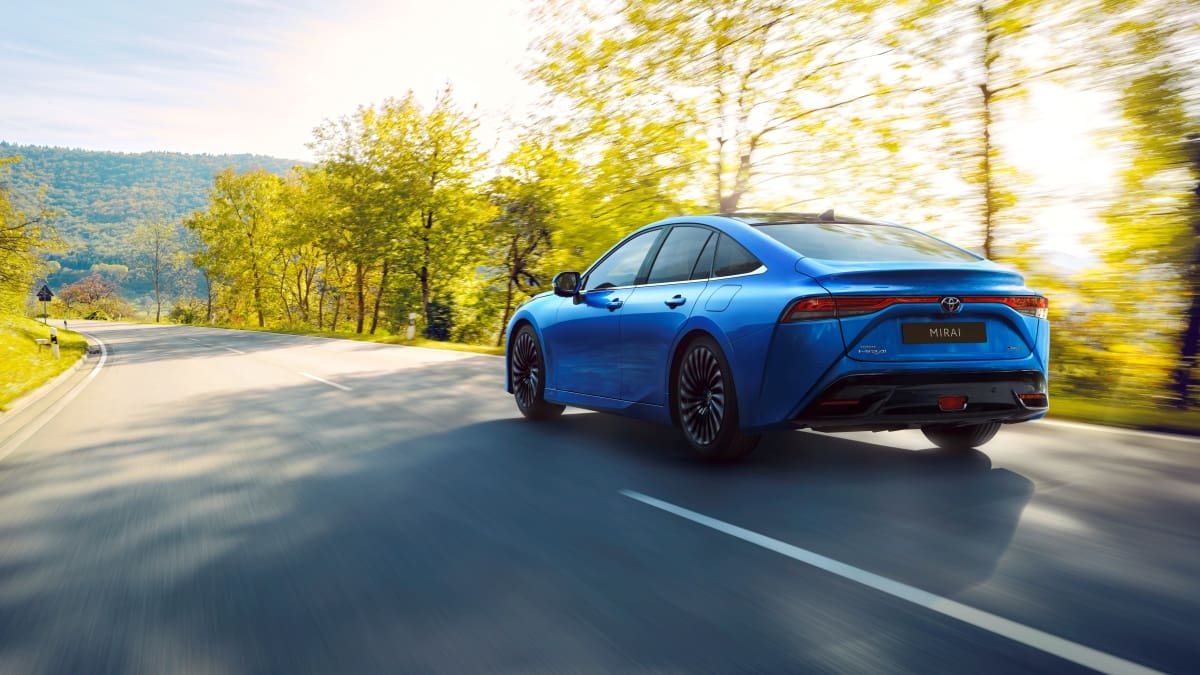In 2020, Toyota introduced the second-generation Mirai. What was thought to be a short-lived romance with hydrogen fuel-cell vehicles, got an unexpected, but very promising sequel. Toyota is shaping up to be the first carmaker to give us a hydrogen combustion engine production car. The Japanese brand already gave us one of the first-ever FCEV (fuel-cell electric vehicle) models, in the form of the Mirai, but the model turned out to be a bit too ahead of its time for one obvious reason.
What is the biggest disadvantage of the Toyota Mirai compared to the Toyota Camry?
One of Toyota Mirai's biggest disadvantages compared to the Camry is the cost of refueling. Hydrogen is still too expensive despite being plentiful. At the time of writing this article, the national average price for a gallon of gasoline, according to AAA Gas Prices, is just under $3.6 for a gallon of regular unleaded. At the same time, a kilogram of hydrogen costs up to $36, which is ten times more expensive. Small wonder the Mirai will eat up $7,560 over 15,000 miles, compared to the hybrid Camry's $950.
Of course, other hydrogen suppliers aren’t as flamboyant with their prices, but the market for this eco-friendly fuel seems to be somewhat speculative at the moment. Hydrogen fuel produced from natural gas is much cheaper at $1.5 to $5 per 1 kilogram (2.2 pounds), but that's still much more expensive than gasoline, pound for pound, considering a gallon of gasoline weighs 6.0 pounds.

What's the future look like for the Toyota Mirai?
On paper, the Mirai is a great family car that's also eco-friendly, which is why people flocked to Toyota's FCEV model when it arrived on sale. It can go 686 miles with a single hydrogen tank and the only emissions are water.
According to HBS Working Knowledge, hydrogen will become affordable at scale, by 2030, with prices per kilogram being in the $1.60 to $1.90 range. If we look at fuel in terms of weight, this means that by 2030, filling your hydrogen car will be about as affordable as filling it up with petrol.
The biggest issue for Toyota's Mirai FCEV remains the infrastructure or lack thereof. This is the main reason why hydrogen for commercial use is so much more expensive. At the point of reporting this, there are just 59 functioning hydrogen fuel stations in the US, with 50 more on the way at some point.
Compared to well over 120,000 conventional fuel stations, it is understandable why hydrogen is still vastly more expensive than petrol, pound for pound. Until then, Toyota Mirai owners will still wonder where to get fuel for their hydrogen electric vehicle.
About the author
Dimitar Angelov's automotive interests made him an expert in a wide variety of vehicles. Japanese brands like Toyota are closest to his heart, although performance cars in general are his favorite segment, which is why he is constantly on the lookout for the best deals on the market. Dimitar Angelov's car passion and knack for the written word led him to complete a Master of Arts in Media and Communications, and classic car restoration. Dim is happy to get behind the wheel of any car and share his impressions. You can follow Dimitar on X, Linked-in, Instagram, and Facebook.












